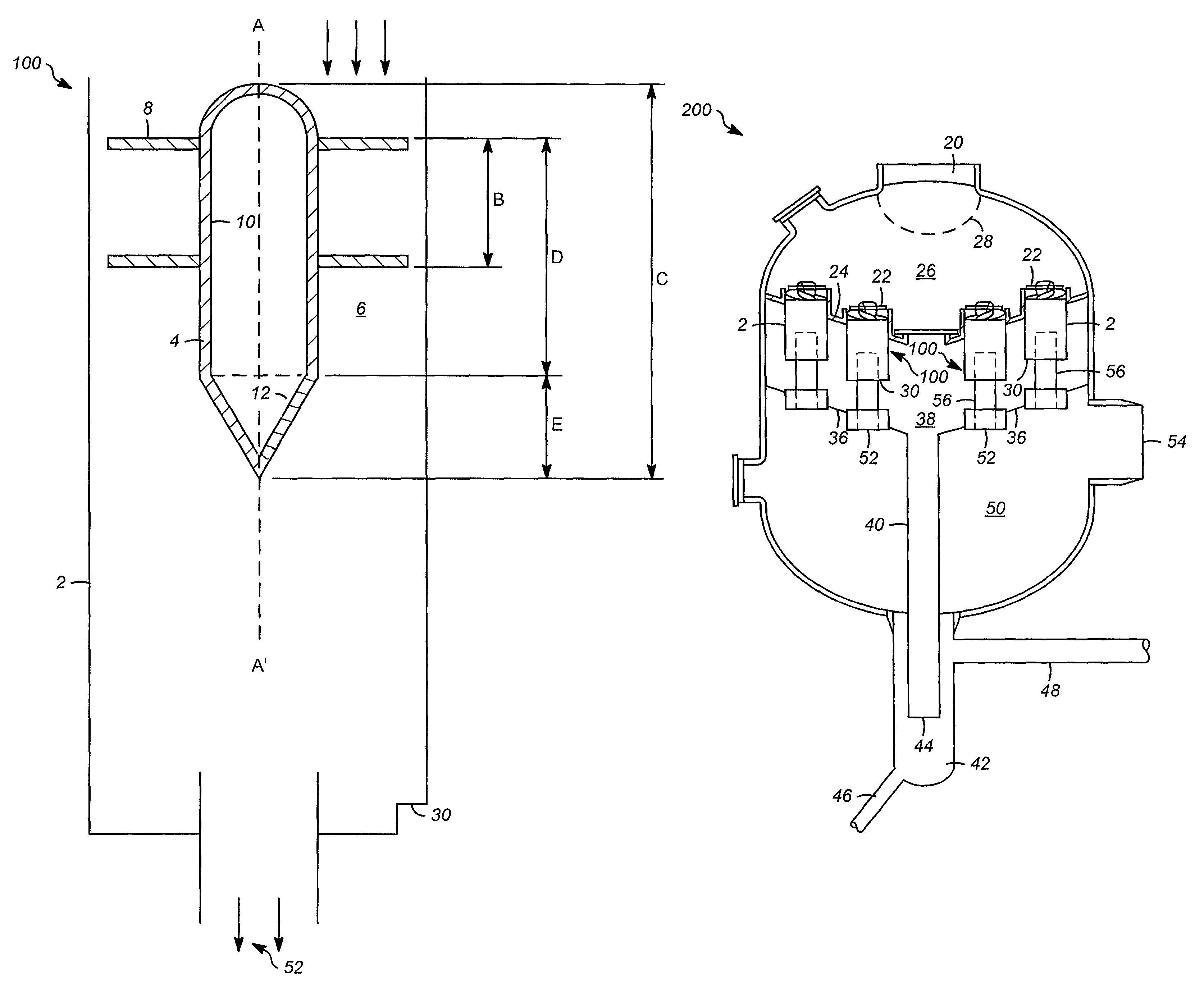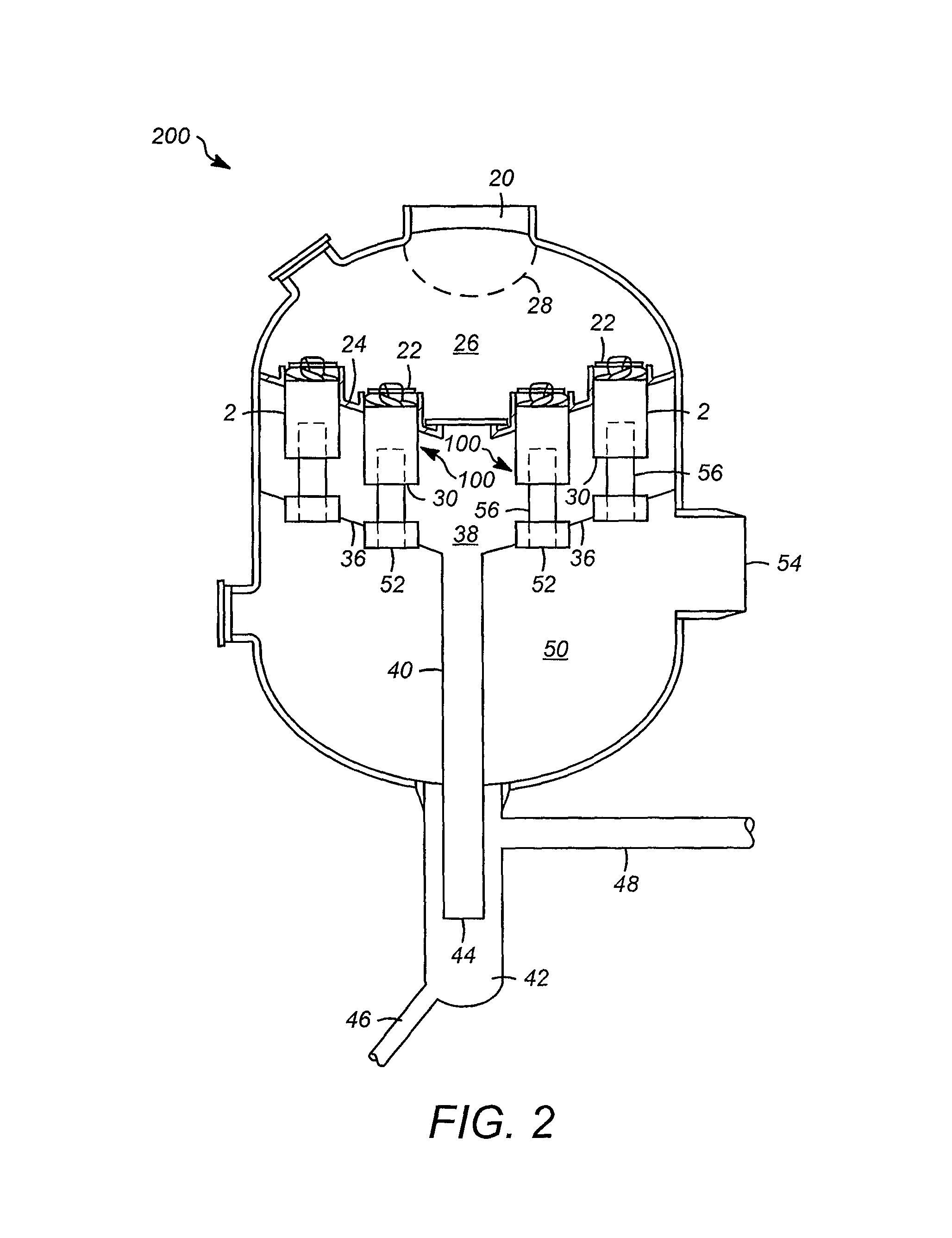Apparatuses and methods for gas-solid separations using cyclones
a technology of apparatus and methods, applied in the field of apparatus and methods for gas-solid separation using cyclones, can solve problems such as equipment (metal) erosion, and achieve the effects of reducing the size of turbulent eddies, reducing the erosion of inner walls, and reducing particle attrition
- Summary
- Abstract
- Description
- Claims
- Application Information
AI Technical Summary
Benefits of technology
Problems solved by technology
Method used
Image
Examples
Embodiment Construction
[0022]The invention is associated with cyclones for gas-solid separators. The cyclones are especially applicable for use in a downflowing (or so-called “uniflow”) third stage separator (TSS) for the removal of dust particles, such as solid catalyst fines, from the flue gas streams exiting the catalyst regenerator in fluid catalytic cracking (FCC) processes. The cyclones, however, are also broadly applicable to the removal of solid particles from gas streams in any number of applications where such removal is desired, particularly with respect to gas effluent streams from fluidized bed processes such as catalytic reactions and catalyst regenerations. Exemplary process streams are those encountered in FCC as well as methanol to olefins (MTO) processes, as described above.
[0023]A representative cyclone 100 is depicted in FIG. 1 and includes a barrel 2 that is normally cylindrical in shape and extends axially. A central hub 4 is disposed within the hollow barrel 2, in this case (but not...
PUM
| Property | Measurement | Unit |
|---|---|---|
| size | aaaaa | aaaaa |
| size | aaaaa | aaaaa |
| diameter | aaaaa | aaaaa |
Abstract
Description
Claims
Application Information
 Login to View More
Login to View More - R&D
- Intellectual Property
- Life Sciences
- Materials
- Tech Scout
- Unparalleled Data Quality
- Higher Quality Content
- 60% Fewer Hallucinations
Browse by: Latest US Patents, China's latest patents, Technical Efficacy Thesaurus, Application Domain, Technology Topic, Popular Technical Reports.
© 2025 PatSnap. All rights reserved.Legal|Privacy policy|Modern Slavery Act Transparency Statement|Sitemap|About US| Contact US: help@patsnap.com



